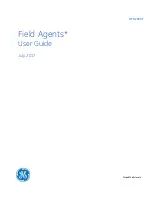
Rev. 1.50, 10/04, page 69 of 448
5.3
Exception Handling Functions
5.3.1
Exception Handling Flow
In exception handling, the contents of the program counter (PC), status register (SR), and R15 are
saved in the saved program counter (SPC), saved status register (SSR), and saved general
register15 (SGR), and the CPU starts execution of the appropriate exception handling routine
according to the vector address. An exception handling routine is a program written by the user to
handle a specific exception. The exception handling routine is terminated and control returned to
the original program by executing a return-from-exception instruction (RTE). This instruction
restores the PC and SR contents and returns control to the normal processing routine at the point at
which the exception occurred. The SGR contents are not written back to R15 with an RTE
instruction.
The basic processing flow is as follows. For the meaning of the SR bits, see section 2,
Programming Model.
1. The PC, SR, and R15 contents are saved in SPC, SSR, and SGR, respectively.
2. The block bit (BL) in SR is set to 1.
3. The mode bit (MD) in SR is set to 1.
4. The register bank bit (RB) in SR is set to 1.
5. In a reset, the FPU disable bit (FD) in SR is cleared to 0.
6. The exception code is written to bits 11 to 0 of the exception event register (EXPEVT) or
interrupt event register (INTEVT).
7. The CPU branches to the determined exception handling vector address, and the exception
handling routine begins.
5.3.2
Exception Handling Vector Addresses
The reset vector address is fixed at H'A0000000. Exception and interrupt vector addresses are
determined by adding the offset for the specific event to the vector base address, which is set by
software in the vector base register (VBR). In the case of the TLB miss exception, for example,
the offset is H'00000400, so if H'9C080000 is set in VBR, the exception handling vector address
will be H'9C080400. If a further exception occurs at the exception handling vector address, a
duplicate exception will result, and recovery will be difficult; therefore, addresses that are not to
be converted (in P1 and P2 areas) should be specified for vector addresses.
Summary of Contents for SuperH SH-4A
Page 2: ...Rev 1 50 10 04 page ii of xx ...
Page 8: ...Rev 1 50 10 04 page viii of xx ...
Page 116: ...Rev 1 50 10 04 page 96 of 448 ...
Page 178: ...Rev 1 50 10 04 page 158 of 448 ...
Page 206: ...Rev 1 50 10 04 page 186 of 448 ...
Page 231: ...Rev 1 50 10 04 page 211 of 448 Possible Exceptions Slot illegal instruction exception ...
Page 235: ...Rev 1 50 10 04 page 215 of 448 Possible Exceptions Slot illegal instruction exception ...
Page 238: ...Rev 1 50 10 04 page 218 of 448 Possible Exceptions Slot illegal instruction exception ...
Page 408: ...Rev 1 50 10 04 page 388 of 448 Possible Exceptions Inexact Not generated when FPSCR PR 1 ...
Page 446: ...Rev 1 50 10 04 page 426 of 448 ...
Page 468: ...Rev 1 50 10 04 page 448 of 448 ...
Page 471: ......
Page 472: ...SH 4A Software Manual ...
















































